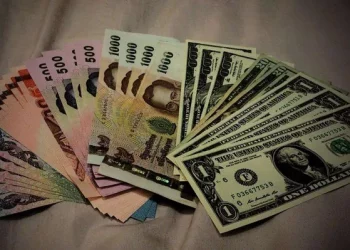The Swedish Krona (SEK), Sweden’s official currency, has long been regarded as a stable and dependable unit in the world of foreign exchange. However, recent years have seen notable fluctuations in its value, prompting many traders, investors, and economists to question whether the Krona is currently weak. This article aims to explore that question in depth, examining historical performance, economic fundamentals, monetary policy, and geopolitical influences, while also considering strategic insights for forex traders.
Historical Context and Recent Trends
To understand whether the Swedish Krona is weak, we first need to consider its historical valuation. Traditionally, the Krona has held steady against major currencies such as the Euro (EUR) and the U.S. Dollar (USD). However, since the global financial crisis of 2008, and more dramatically in the years following 2015, the Krona has shown a persistent depreciation trend.
From 2013 to 2023, the SEK lost around 25% of its value against the Euro and nearly 35% against the Dollar. Several factors have contributed to this trend, including diverging monetary policies, inflation disparities, and external shocks such as the COVID-19 pandemic and the energy crisis triggered by the war in Ukraine.
In 2024, while there was some recovery, the Krona continued to trade near historically low levels against both the EUR and USD. This long-term decline has raised concerns about structural weaknesses within the Swedish economy and its currency.
Economic Fundamentals
Inflation and Interest Rates
One of the key drivers of a currency’s strength is its country’s inflation rate and interest rate environment. Sweden, like many other advanced economies, experienced a spike in inflation following the pandemic. The Riksbank (Sweden’s central bank) responded with aggressive rate hikes, similar to actions taken by the Federal Reserve and the European Central Bank (ECB).
By early 2025, Sweden’s inflation has moderated to around 2.5%, a figure close to the Riksbank’s target. However, interest rates remain elevated, which should theoretically support the Krona. Despite this, the SEK has not gained significant ground, suggesting other factors are at play.
Economic Growth and Productivity
Sweden boasts a highly developed, export-oriented economy with strong industrial, technological, and service sectors. Yet, GDP growth has been tepid in recent years, hovering around 1-1.5% annually. Weaker-than-expected industrial output and declining consumer confidence have added downward pressure on the Krona.
Moreover, while Sweden’s public finances are relatively healthy and the country enjoys a low debt-to-GDP ratio compared to many peers, the domestic economy has not provided the momentum needed to boost the currency.
Monetary Policy and Central Bank Strategy
The Riksbank’s policy stance is crucial in assessing the Krona’s strength. Historically dovish, the Riksbank kept interest rates negative for several years, only exiting that regime in 2020. Although it has since shifted to a more hawkish position to combat inflation, market perceptions of its credibility and commitment to currency stabilization remain mixed.
Currency traders often compare central banks’ relative policies. While the Riksbank has increased rates, the pace and magnitude have been somewhat less aggressive than the Federal Reserve or ECB, creating interest rate differentials that may make the Krona less attractive to investors seeking yield.
External Factors and Global Sentiment
Global Risk Appetite
The Krona, often considered a risk-sensitive currency, tends to weaken during periods of global uncertainty or market stress. Events like the war in Ukraine, tensions between major economies, and volatility in commodity markets have all dampened risk appetite, leading investors to favor “safe haven” currencies like the USD or CHF (Swiss Franc) over the SEK.
Trade and Energy Exposure
Sweden is a net exporter and highly integrated into the European and global economy. However, recent supply chain disruptions and energy price volatility have hurt Swedish exports, particularly in energy-intensive sectors like manufacturing and automotive. The energy crisis in Europe has also made Sweden more vulnerable than in previous decades.
The Role of Market Sentiment
Market sentiment and speculative positioning play an underrated yet powerful role in currency valuation. The Krona has seen bouts of speculative selling, especially during global downturns. Hedge funds and institutional traders often use the SEK as a proxy for broader European risk, shorting it during times of heightened geopolitical or financial stress.
Recent data from the Commitment of Traders (COT) reports show that net short positions in SEK futures have increased, reflecting broader pessimism. Unless sentiment improves significantly, it’s difficult to see a sustained recovery in the Krona’s value.
Technical Analysis Perspective
From a chartist’s view, long-term technical indicators confirm a bearish trend for the Krona. Major support levels have been broken repeatedly over the past decade, and resistance zones have held firm. Moving averages, RSI, and MACD indicators continue to reflect a downtrend in the SEK against both the EUR and USD.
Forex traders should watch key levels, such as SEK 11.50 against the Euro and SEK 10.80 against the Dollar. A breach above these resistance levels would be needed to signal any meaningful trend reversal.
Comparative Perspective: SEK vs. Nordic and G10 Peers
Compared to other Nordic currencies like the Norwegian Krone (NOK) and Danish Krone (DKK), the Swedish Krona has underperformed. The NOK, supported by Norway’s oil revenues, has been more resilient. The DKK, pegged to the Euro, has enjoyed more stability.
In the G10 universe, the Krona has also lagged behind stronger performers like the USD, CHF, and even the British Pound (GBP). This divergence indicates that SEK’s weakness is not just a result of global conditions, but also reflects idiosyncratic domestic challenges.
What This Means for Traders
Strategies for a Weak Krona Environment
For forex traders, a weak Krona presents both challenges and opportunities. Here are some strategic considerations:
Carry Trade: Given the relatively low interest rates in Sweden, the Krona can be used in carry trade strategies, borrowing SEK to fund purchases of higher-yielding currencies.
Hedging Swedish Exposure: Corporations and investors with exposure to Swedish assets may consider hedging against further SEK depreciation using forward contracts or currency options.
Momentum Trading: Traders can capitalize on continued weakness by shorting SEK against stronger currencies, using technical indicators to time entries and exits.
Reversal Scenarios: Should the Riksbank surprise markets with aggressive tightening or Sweden post strong economic data, a reversal could present a long SEK opportunity.
Conclusion
The answer is yes—at least in a relative and market-perception sense. The Swedish Krona has weakened significantly over the past decade and continues to trade at low levels against major currencies. While some of the reasons for this weakness are external and cyclical, others are more structural, including prolonged dovish monetary policy and lackluster economic growth.
That said, the Krona is not in crisis. Sweden’s economic fundamentals remain sound in many respects, and the Riksbank has tools to stabilize the currency if necessary. However, until market sentiment turns more favorable and economic momentum picks up, the Krona is likely to remain under pressure.
For forex traders, understanding the complex interplay of economic indicators, central bank policy, and market sentiment is essential for navigating the SEK landscape effectively. Whether you’re hedging, speculating, or investing, staying informed and agile is key in this evolving currency story.
Related Topics:

























